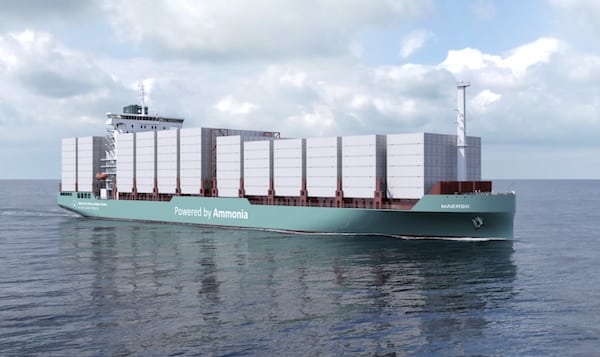Breakthrough in Ammonia-Powered Shipping Design

A significant advancement in ammonia-powered shipping has been achieved with the unveiling of a comprehensive concept design for a 3,500 TEU ammonia-fueled container feeder vessel. This innovative design is the result of a collaboration among prominent industry players, including the Mærsk Mc-Kinney Møller Center for Zero Carbon Shipping, Maersk, Deltamarin, and others. The project addresses crucial technical and safety aspects necessary for ammonia to be considered a viable maritime fuel.
Key Technical and Safety Considerations
The newly released report focuses on two primary areas: the essential technical design factors for ammonia-fueled vessels and the safety measures required to protect the crew. Key technical considerations include tank capacity and the strategic placement of critical components. Safety barriers are also a major focus, encompassing physical separation of ammonia spaces, safe venting distances, drainage systems, and ammonia release management systems (ARMS).
Deltamarin, the ship designer, has played a pivotal role in developing these safety systems and integrating necessary barriers into the vessel’s layout. This ensures compliance with stringent safety standards while optimizing operational efficiency. The design’s safety measures have been validated through rigorous assessments, including hazard identification (HAZID), hazard and operability study (HAZOP), and quantitative risk assessment (QRA). As a result, the design has received Approvals in Principle from both the American Bureau of Shipping (ABS) and Lloyd’s Register (LR), confirming its technical readiness.
ABS Issues AIP to HD Hyundai Mipo for a Cutting-Edge, Ammonia-Powered Medium Range Tanker
Evangelos Fragkoulis, Head of Ship Design at MMMCZCS, emphasized the importance of this study, stating, “This study represents a significant step in moving beyond rhetoric and addressing the real, technical questions surrounding ammonia as a marine fuel.” He noted that the design not only offers practical solutions but also instills confidence in the industry by transforming uncertainty into engineering reality.
Collaboration and Future Implications
Peter Kondratjeff, Project Manager and Naval Architect at Deltamarin, expressed pride in the collaboration with the Mærsk Mc-Kinney Møller Center for Zero Carbon Shipping. He highlighted that the extensive risk assessments conducted during the design process have resulted in a vessel that meets high safety standards. This collaboration underscores the critical role of ship design in advancing the technical qualification of ammonia as a sustainable marine fuel.
The project identifies key areas that require attention to ensure that ammonia-fueled vessels are safe, efficient, and commercially viable. As the shipping industry seeks to decarbonize, this innovative design marks a crucial step toward integrating ammonia as a practical fuel source, paving the way for a more sustainable maritime future.
